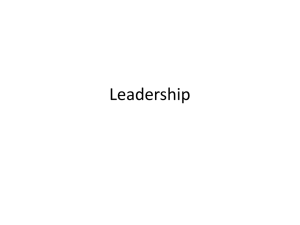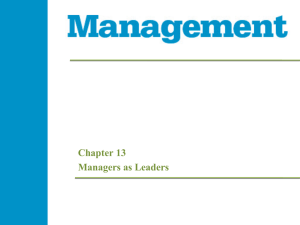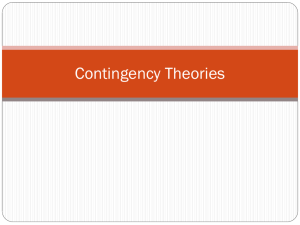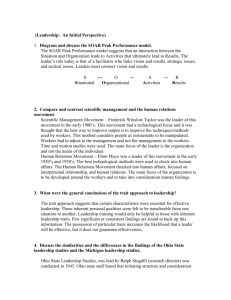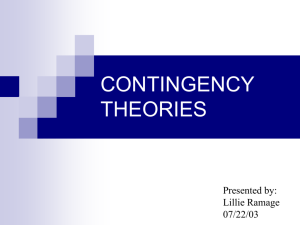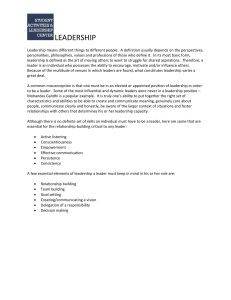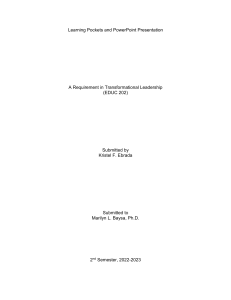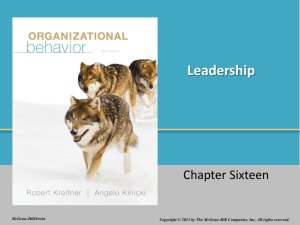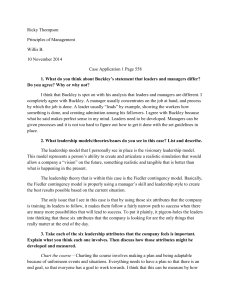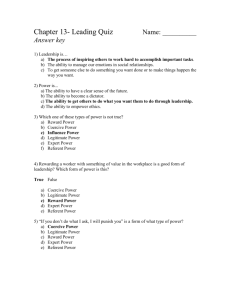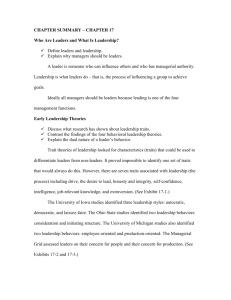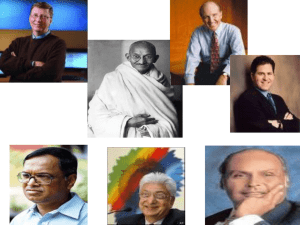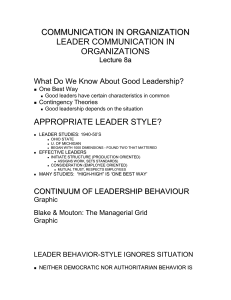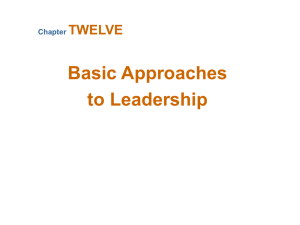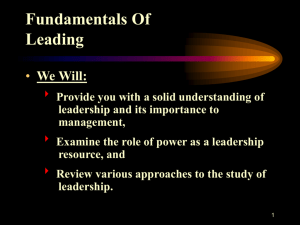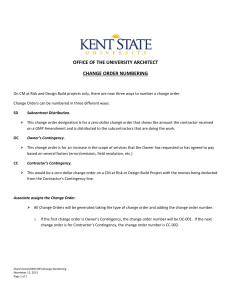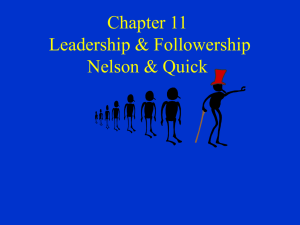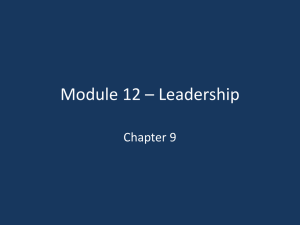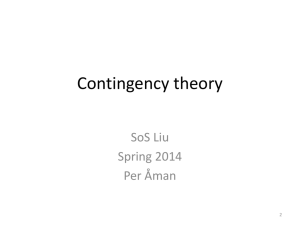100 Years of Leadership Research
advertisement
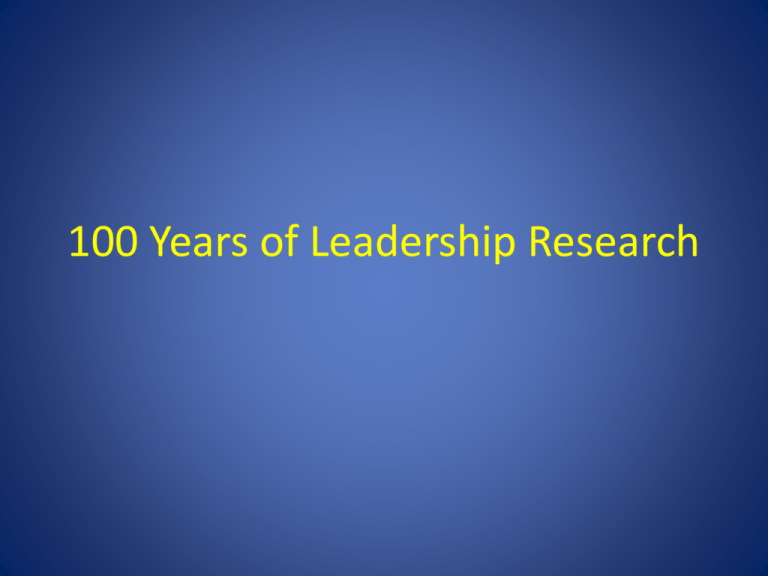
100 Years of Leadership Research Leadership defined • If you get people to do something they are not inclined to do, • OR • You get people to not do that which they’d really rather do ….. • THAT is what leadership is about. (Influence) The “Type” Approach • Great “Man” theory – leaders are born, not made • Cultural Determinism – unusual social circumstances create conditions where ordinary people become great leaders The “Trait” Approach • Great leadership can be discovered by analyzing specific traits that great leaders possess, but followers do not • Ralph Stogdill’s point – leaders, followers and context ALL matter when studying leadership Behavioral Approach • Rather than study what leaders are like, instead study what leaders DO when effective • Ohio State studies reveal 2 basic behaviors demonstrated by effective leaders – Consideration – Initiating Structure Contingency Models • Fred Fiedler’s “Contingency Model” – leading is a function of LPC and 3 situation factors – Task Structure – Leader-member relations – Leader position power Critiques of THE “Contingency” model • Model misses the core of leadership – the mutual influence of leader and follower in an exchange relationship • Independent researchers fail to find the results Fiedler and his students obtained The Contingency Model - Fixed • Study leaders, followers, context • Focus on influence • Recognize leadership as a “temporary” role – managing is a job title, leading is a temporary assignment Current models • Path-goal Theory – leaders clarify paths to obtain goals valued by person and company • Situation Leadership – leaders should shift conduct based on the situation they face • Charismatic leadership – throwback to Types Current models (continued) • Transformation leadership – leadership happens when a top officer transforms the entire enterprise (MBO definition) • Transactional Leadership – focus on social exchange between leader and follower • A lot of writers use the word “leadership” too broadly, when there are other factors that matter for company-wide success Mintzberg’s Mgmt Roles http://www.edu-article.blogspot.com/2012/10/mintzbergs-10-managerialroles.html Summary/Conclusion • Leadership is a temporary influence process • People attribute too much causal effect to actions of top management • Judging leadership by financial outcomes is a fool’s errand
